Contents
- Crop Cultivation
- Agricultural Communities
- Festivals/Rituals Related to Farming
- Dhawara
- Types of Farming
- Sustainable Agriculture
- Kitchen Gardens
- Use of Technology
- Market Structure: APMCs
- List of APMC markets(as of September 2024)
- Farmers Issues
- Impact of Changing Climate Conditions
- Graphs
- Irrigation
- A. No. of Projects
- B. No. of Ponds/Vilage Lakes and Storage Dams
- C. Irrigation Beneficiary Area vs Irrigated Area
- D. Share of Beneficiary Area Irrigated
- E. Tubewells and Pumps Installed In The Year
- F. Irrigation and Water Pumping Facilities
- Cropping Metrics
- A. Share in Total Holdings
- B. Cultivated Area (With Components)
- C. Gross Cropped Area (Irrigated + Unirrigated)
- D. Share of Cropped Area Irrigated
- E. Distribution of Chemical Fertilizers
- Land Use and Credit
- A. Area of Agricultural Land Holdings (With Size Group)
- B. Size Groups' Share in Total Agricultural Land Holdings Area
- C. No. of Agricultural Land Holdings (With Size Group)
- D. Size Groups' Share in Total No. of Agricultural Land Holdings
- E. Agricultural Lending
- F. Agricultural Credit as a share of Total Credit
- Sources
HINGOLI
Agriculture
Last updated on 6 November 2025. Help us improve the information on this page by clicking on suggest edits or writing to us.
Agriculture is a major part of Hingoli’s economy, with much of the district’s population relying on farming as a primary source of income. Farmers grow a range of crops, including sunflower (suraj mukhi), sesame (teel), pulses, and seasonal grains suited to local soil and climate conditions.
Notably, Hingoli is also situated in a drought-prone area of Maharashtra and depends mainly on rainwater for irrigation. This dependence makes farming outcomes sensitive to changes in rainfall, and water scarcity remains a consistent challenge for the district’s agricultural production.
Crop Cultivation
Hingoli is known for a rich variety of crops such as sunflower (Suraj Mukhi), sesame (teel), sorghum (jowar), bajra, amaranth (ambadi), tandul Kundra, tarota, cotton, soybean (soya), pigeon pea (tur), and chickpeas (chana). Locals state that recent advancements in irrigation techniques—thanks to water wells, artificial lakes, and boreholes—have empowered farmers to diversify their crop choices and explore more profitable options like turmeric (haldi) and sugarcane (ganna).
Among these, soybeans have emerged as a staple crop for many farmers. Its low maintenance requirements and ability to thrive on limited water make it an appealing choice, allowing farmers to conserve resources for more demanding crops like cotton and turmeric. With improved water availability, farmers are increasingly adopting crops believed to yield higher profits, such as bhuimug (black gram) and wheat (gehun).
Historically, Hingoli was renowned for its traditional staples like jowar (sorghum), bajra (pearl millet), and cotton. However, the winds of change have swept through the region, driven by technological advancements and evolving market demands. The Green Revolution has played a significant role in this transformation, introducing high-yield hybrid crops that have gained traction for their enhanced productivity.
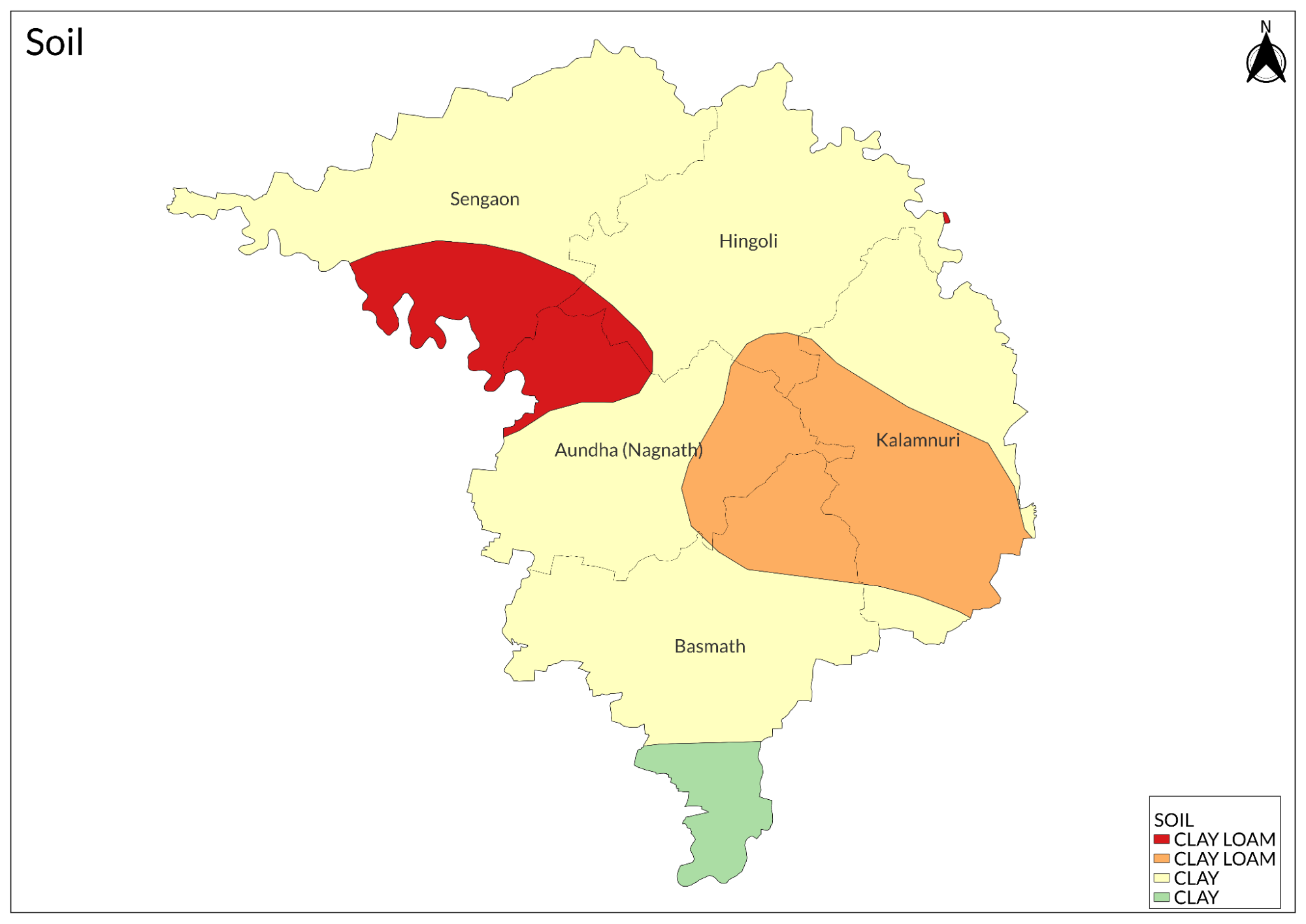
As farmers adapt to these changes, the cropping patterns have evolved further. While cotton, soybean, Urad, jowar, and maize (Makka) were once the mainstays, there is now a growing focus on sugarcane, turmeric, bhuimug, and wheat. Increased education and awareness of market trends have empowered farmers to implement effective water management strategies, enhancing their ability to cultivate a wider range of crops.
Locals report that this shift has led to a decline in the cultivation of crops like karhal, mohri, kardai, and even sunflower. Factors driving this transition include the pursuit of more lucrative alternatives, changing dietary preferences, climate considerations, and government subsidies for specific crops.
Agricultural Communities
In Hingoli, women are the backbone of agricultural labor, playing a vital role in every aspect from sowing to harvesting. They make up a significant part of the workforce on both small and large farms, engaged as seasonal or regular laborers. Essential tasks like cotton collection, vegetable harvesting, and crop maintenance are predominantly carried out by women. Many also participate in livestock rearing, including poultry farming, fisheries, and goat herding. Additionally, women often cultivate vegetables in home gardens for their kitchens and may run small businesses creating handicrafts.
One notable figure in Hingoli's agricultural landscape is Kalavati Swadkr, an independent female farmer and advocate for economically sustainable farming.
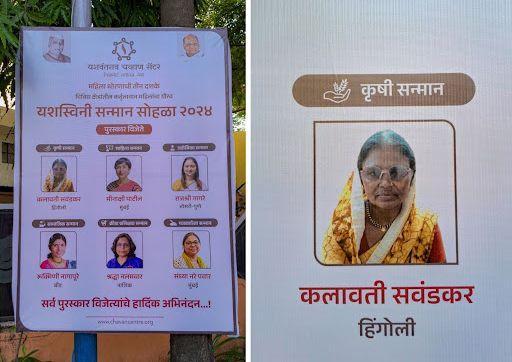
She leads a group that supports financially unstable widows through a ‘Bachat gat’ initiative. Kalavati's contributions have earned her recognition, and she will receive the ‘Krushi Sanman’ award at the Yashwantrao Chavan Centre in 2024.
The agricultural labor force also includes migrant workers from Uttar Pradesh and Bihar, who specialize in livestock maintenance, and seasonal laborers from Punjab, who migrate during harvest time. This influx of labor highlights the importance of a diverse workforce in sustaining agricultural productivity and meeting seasonal demands.
Farmers in Hingoli face numerous challenges that impact their livelihoods. The region's semi-arid climate poses significant obstacles due to limited water resources, reliance on irregular monsoons, and dwindling groundwater levels, all of which affect irrigation, crop yields, and farmer incomes.
During non-agricultural seasons, many farmers engage in side businesses to supplement their income. These activities are crucial, as agriculture alone may not provide sufficient earnings due to seasonal fluctuations. Common practices include raising cattle, goats, or poultry for additional income through milk, meat, and eggs, as well as using farm by-products for manure.
Some farmers operate small shops selling groceries, vegetables, and fruits, while others provide transportation services using vehicles like jeeps and small trucks to transport goods, people, or agricultural produce to nearby markets.
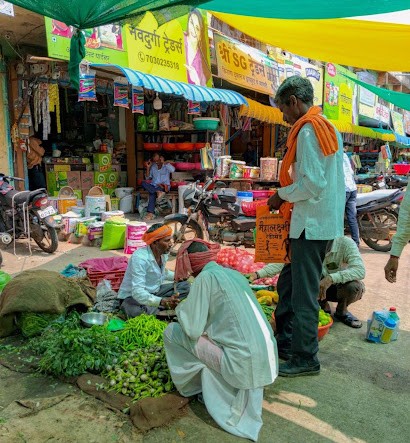
Additionally, some engage in handicrafts such as pottery, weaving, and woodworking, selling their creations locally.
During the off-season, farmers may also seek daily-wage labor opportunities in construction, road maintenance, or local projects, or migrate temporarily to nearby cities for work in construction, manufacturing, or services. These side activities are essential for enhancing farmers' incomes, reducing reliance on agriculture, and navigating the financial challenges posed by seasonal farming.
In Hingoli, today, contractual farming has also become increasingly common as landowners seek effective ways to utilize their land while living in other cities. One prevalent practice involves hiring a ‘Gadi,’ a worker contracted annually for a fixed salary. The Gadi is responsible for managing farm work and labor, but this system has its drawbacks; the landowner bears all losses, which can lead to decreased motivation and diligence from the Gadi.
Alternatively, landowners can engage a Bhagin who shares both profits and losses, typically contributing one-third of the annual expenses. This profit-sharing arrangement incentivizes the ‘Bhagin’ to manage operations efficiently, aligning their interests with those of the landowner. Such contractual agreements allow absentee landowners to generate income from their land without direct involvement, though they require careful oversight to mitigate risks and ensure profitability.
Festivals/Rituals Related to Farming
Traditions, festivals, and practices of the indigenous communities related to agriculture are deeply linked with planting, harvesting, etc. These cultural practices not only mark seasonal transitions but also honor agricultural devas and devis, expressing gratitude for successful harvests.
Many cultures have rituals to ensure a successful planting season. Farmers have a ceremony for a blessing on the first day of the Marathi year. In this ceremony, a female figure performs a pooja of the animals in her home and feeds them ‘Puran poli'.
Additionally, the harvest festival known as Khal Jevan brings people together for rituals aimed at blessing future harvests. During this celebration, farmers, along with their families and laborers, dedicate their harvest to the devta or devi, sharing special dishes cooked on the farm and strengthening community bonds.
Dhawara
In Dalit Kitchens of Marathwada (2024), Shahu Patole describes Dhawara as an important harvest tradition among local farming communities of the Marathwada region (of which Hingoli is a part). The ritual marks the end of the harvest season and is centred around a sacred meal shared by families and neighbours. The preparations for Dhawara begin on the new moon of Diwali, a day dedicated to worshiping the Pandavas, the five legendary brothers from the Mahabharat. In the fields, five small stones are selected and painted with Chuna (limewash), symbolizing the Pandavas.
As part of the ritual, wheat flour dough is shaped into various forms, such as plain balls, fruits, and lamps, before being steamed. These, along with dried dates, dry coconut, Ambil (a tangy buttermilk preparation infused with chilies and coriander), Kadhi (a tempered chickpea-buttermilk curry), and Wadya (steamed gram flour cakes), are offered as Naivedya (a devotional offering). A Morva (medium-sized earthen pot) and Shendur (a sacred red powder) are also placed near the symbolic Pandavas.
In keeping with tradition, five stacks of Jowar Pachundas (bundles of harvested sorghum) are arranged upright before the stones. A lamp is then placed inside the Morva and lit as a mark of reverence. At dusk, the Morva is carefully buried near the painted stones, symbolizing the completion of the Dhawara ritual and expressing gratitude for the harvest
Types of Farming
Chemical farming, characterized by the extensive use of synthetic fertilizers, pesticides, and herbicides, has historically boosted agricultural productivity. However, this reliance on chemicals has raised significant concerns regarding soil health, water quality, and long-term sustainability, prompting a movement toward more eco-friendly practices.
While chemical farming remains dominant in Hingoli, several sustainable methods are also practiced. One prominent method practiced, as locals state, is agroforestry, which involves planting trees and shrubs alongside crops. For example, growing crops under the shade of neem trees improves soil fertility through nutrient cycling and enhances crop quality.
Farmers also employ contour farming in hilly areas, where they create Nali channels that conserve soil and water by preventing runoff. This technique allows water to infiltrate the ground, boosting groundwater levels and protecting against erosion. Crop rotation is widely practiced to maintain soil health and prevent nutrient depletion. Many farmers rotate soybeans with other crops to take advantage of their nitrogen-fixing properties, enriching the soil for future crops.
Preserving crop diversity is essential for protecting against diseases and adapting to climate variations. Farmers often collect and store seeds from previous harvests, conserving traditional varieties and supporting agricultural sustainability. Intercropping, or growing multiple crops together, maximizes land use and reduces the risk of crop failure. This practice increases overall yield and enhances biodiversity, fostering a vibrant ecosystem on the farm.
Innovative systems, such as integrating aquaponics—combining fish farming with plant cultivation—create closed-loop systems. In these setups, waste from fish fertilizes plants, minimizing environmental impact while maximizing resource efficiency.
Organic farming techniques are also gaining traction in Hingoli. By avoiding synthetic chemicals and utilizing organic materials like compost, farmers enhance soil fertility. Composting animal dung and poultry waste produces natural fertilizers that improve soil structure and nutrient content. Notably, NITI Aayog tasked ICAR-NAARM and ICAR-CRIDA to study the transition from chemical to natural farming practices, with Hingoli selected as one of just two districts in Maharashtra for this important research.
Sustainable Agriculture
In the early 21st century, the Sustainable Agriculture project emerged in Hingoli as a proactive response to the pressing challenges faced by local farmers, including deteriorating soil health and the pervasive impact of chemical farming. Recognizing the urgency for sustainable practices, the project set out to educate 500 farmers across ten villages in Hingoli about organic farming methods.
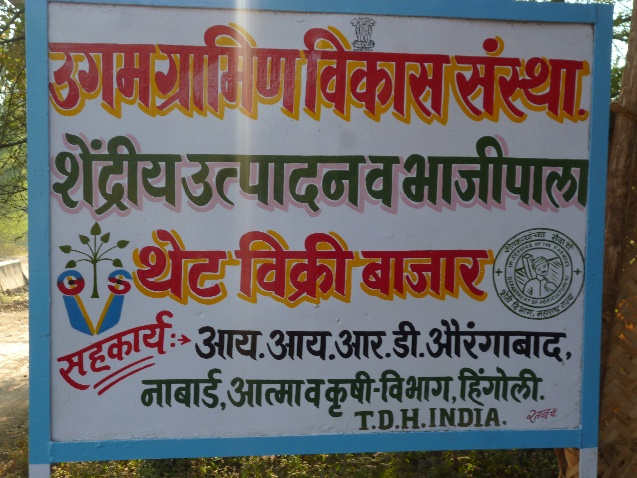
Launched in 2002, a dedicated team from UGAM underwent training at the Institute for Integrated Rural Development (IIRD) in Aurangabad. By 2004, their hard work bore fruit, with the project fully implemented. To support these efforts, UGAM established seed banks in each village, managed collaboratively by local representatives and farmers. Participants received organic seeds with the expectation of returning the same amount, plus an additional 5% of their produce, fostering a sense of community and sustainability.
This approach not only encouraged sustainable practices but also helped improve soil fertility and preserve traditional crop varieties. As a result, more farmers adopted organic methods, leading to healthier land and increased market opportunities. Today, over 35 farmers successfully sell their products in organic markets, and it is said that their soil fertility has also noticeably improved.
Kitchen Gardens
In response to the rise of chemical farming and its adverse effects on health and the environment, the non-profit organization JGPSS launched a kitchen garden program. This initiative focused on seed distribution and empowered women’s self-help groups, fostering community engagement. Rooftop kitchen gardens were also established to promote self-sufficiency and better health, ensuring that families have access to fresh produce while enhancing local food security.
Use of Technology
In modern agriculture, the adoption of advanced technologies and implements has significantly enhanced productivity and sustainability. Equipment like harrows (halars), drip irrigation systems, and water pumps play crucial roles. Harrows efficiently prepare the soil for planting, while drip irrigation optimizes water use by delivering precise amounts directly to plant roots, conserving resources. Water pumps enable irrigation in areas with limited water access, ensuring consistent crop growth, and boiling cookers assist in food processing, preserving produce, and ensuring food safety.
Modern agriculture often involves the use of machinery and equipment for work such as plowing (Nangarni), irrigation, and harvesting. Agricultural laborers are trained to operate this equipment efficiently and safely.
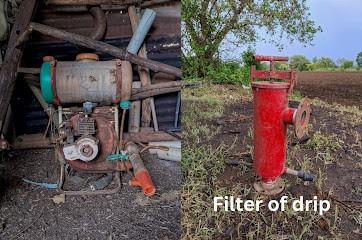
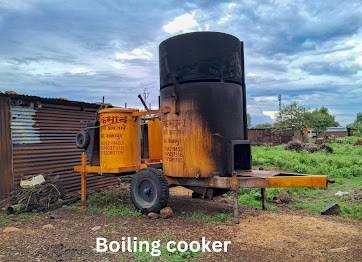
The introduction of machinery, particularly tractors, has revolutionized agriculture, making it more efficient and less labor-intensive. However, the costs associated with purchasing, maintaining, and operating tractors can strain farmers' financial resources. Additionally, the prolonged sitting and repetitive motions involved in tractor operation can lead to health issues such as back pain and muscle soreness, affecting the well-being of operators.
Irrigation systems are essential for agriculture, providing water to crops when natural rainfall is insufficient. Reliable irrigation enables farmers in arid and semi-arid regions like Hingoli to grow a wider variety of crops and cultivate multiple cycles per year, enhancing overall productivity. These systems allow farmers to control the timing and amount of water applied, optimizing water use and minimizing waste. Properly managed irrigation contributes to improved soil structure and fertility, facilitating nutrient uptake and reducing erosion risks.
In 2006, a Centrally Sponsored Scheme on Micro Irrigation was introduced in Hingoli to promote improved irrigation methods for better water use efficiency and to stimulate agricultural growth. The Government of India has since implemented this initiative in a mission mode as the National Mission on Micro Irrigation (NMMI). The adoption of advanced irrigation techniques such as drip and sprinkler systems is expected to save water, reduce power and fertilizer consumption, and lower weeding costs while mitigating environmental issues like waterlogging and soil salinity.
However, locals have expressed concerns about the cost of installing drip irrigation systems, which require pumps, pipes, and filters. Additionally, improper irrigation practices—such as over-irrigation or inadequate drainage—can lead to soil salinization and waterlogging, degrading soil quality and reducing crop productivity over time. Poorly managed irrigation can also deplete groundwater resources, harm aquatic ecosystems, and disrupt natural water flows, highlighting the importance of careful management and planning in agricultural practices.
Market Structure: APMCs
Farmers in Hingoli face ongoing challenges related to limited market access and price fluctuations often influenced by intermediaries. The lack of direct market linkages and infrastructure, such as adequate cold storage facilities, can make it difficult for farmers to secure fair prices for their produce.
Opinions about Agricultural Produce Market Committees (APMCs) vary among farmers. Many farmers view APMCs positively, as they provide an authorised marketplace that aims to stabilise prices and prevent sudden fluctuations. By operating under set rules and regulations, APMCs are seen to encourage transparent transactions and build trust within the farming community. Farmers also value the prompt payments facilitated by APMCs and the ability to negotiate rates collectively through organised platforms.
However, some farmers feel that APMCs have not fully succeeded in eliminating the role of middlemen, who may continue to influence prices and reduce farmers’ profit margins. In certain areas, APMCs are also viewed as having monopolistic control over local agricultural markets, which can limit options for farmers and, in some cases, lead to lower returns. Additional concerns include the market fees and commissions charged by APMCs, which can further reduce net earnings from sales.
Cooperative organisations such as the District Cooperative Marketing Federation and the Hingoli District Central Cooperative Bank play an important role in supporting farmers. These cooperatives help facilitate collective marketing and provide financial services that contribute to securing fair prices. Farmer Producer Organisations (FPOs) like the Hingoli Cotton Growers Producer Company also help small-scale farmers improve production, negotiate better prices, and strengthen the overall financial stability of the local farming community.
List of APMC markets(as of September 2024)
|
Sr. No |
Name |
Est. Year |
Chairman |
No. of Godowns |
|
1 |
Akhada Balapur |
1961 |
Balaji Dashrath Padhade |
3 |
|
2 |
Hingoli |
1933 |
Rajesh Sahebrao Patil |
9 |
|
3 |
Jawala Bajar |
1989 |
Shivaji Krushnaji Bhalerao |
6 |
|
4 |
Kalamnuri |
1966 |
NA |
NA |
|
5 |
Sengaon |
1993 |
Ashokrao Dagduji Thengal |
NA |
|
6 |
Sirsum |
NA |
NA |
NA |
Farmers Issues
Impact of Changing Climate Conditions
Hingoli experiences variability in rainfall influenced by climate change. Even though Paddy requires more water than any other crop, there was a time when farmers were cultivating ‘rice’ purely dependent upon rainwater. Today, rainwater is not enough even for drought-resistant crops like Jowar and Bajra. Farmers in Hingoli traditionally practice rainfed agriculture and are increasingly adopting techniques like drip irrigation to mitigate water scarcity. Farmers have diversified crop choices to adapt to changing climate conditions. For instance, they grow drought-resistant varieties of Jowar and Bajra.

Traditional varieties like Talki Jowar, Varhadi Jowar, Bansi Wheat, Gangwal Jowar, Dhamni Jowar, and "Mahu cha Hurda" have been cultivated for generations. Sadly, these crops are now rarely cultivated due to modern agricultural practices favoring high-yield varieties and changing market demands. Today, the Sorghum variety of Jowar is widely grown due to its drought tolerance and nutritional value. Bajra (pearl millet) is another staple crop known for its resilience in dry conditions. Pulse varieties like Tur dal and Urad dal are also grown.
Graphs
Irrigation
Cropping Metrics
Land Use and Credit
Sources
JGPSS.comhttps://jgpss.org/education/kitchen-garden-p…
NABARD. 2016-17.Potential Linked Credit Plan: Hingoli. Maharashtra Regional Office, Pune.https://www.nabard.org/auth/writereaddata/te…
Ranjit Kuma, Sanjiv Kumar, BS Yashavanth, PC Meena, P Ramesh, AK Indoria, Sumanta Kundu M Manjunath. 2020.Adoption of Natural Farming and its Effect on Crop Yield and Farmers' Livelihood in India.ICAR-National Academy of Agricultural Research Management.https://naarm.org.in/wp-content/uploads/2021…
Shahu Patole. 2024.Dalit Kitchens of Marathwada.Translated by Bhushan Kargaonkar. Harper Collins: New Delhi.
झाडे, तुकाराम. 2023. हिंगोली: विकासाचा अनुशेष. लोकसत्ता.https://www.loksatta.com/maharashtra/hingoli…
Last updated on 6 November 2025. Help us improve the information on this page by clicking on suggest edits or writing to us.